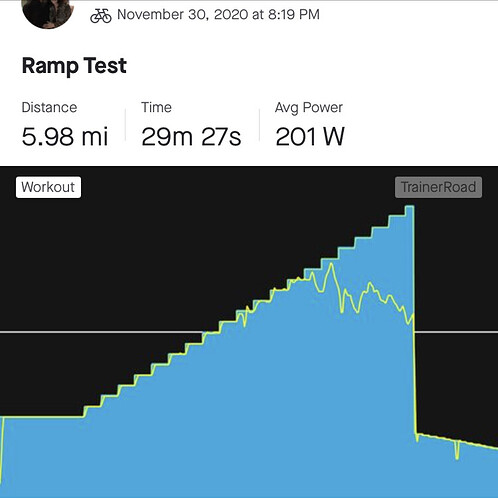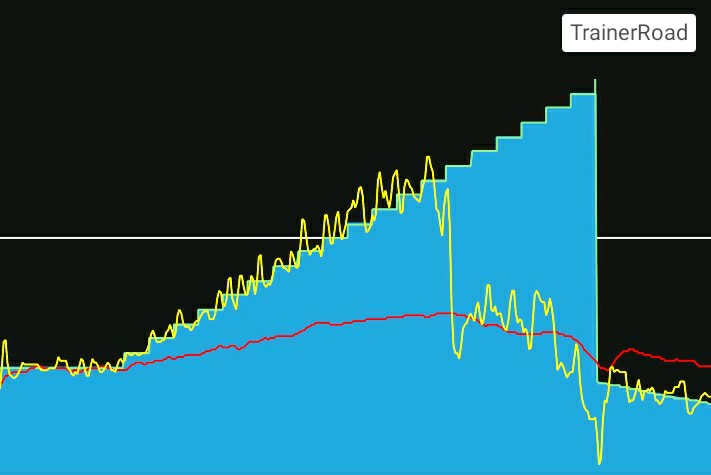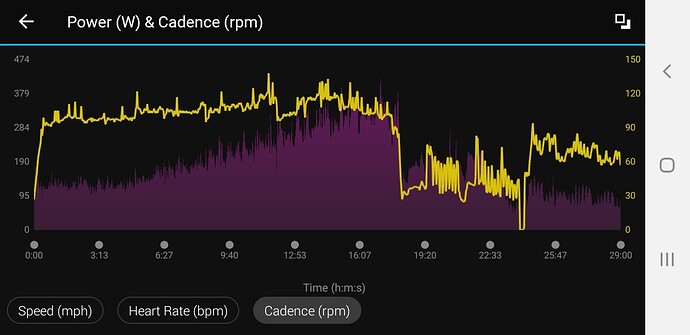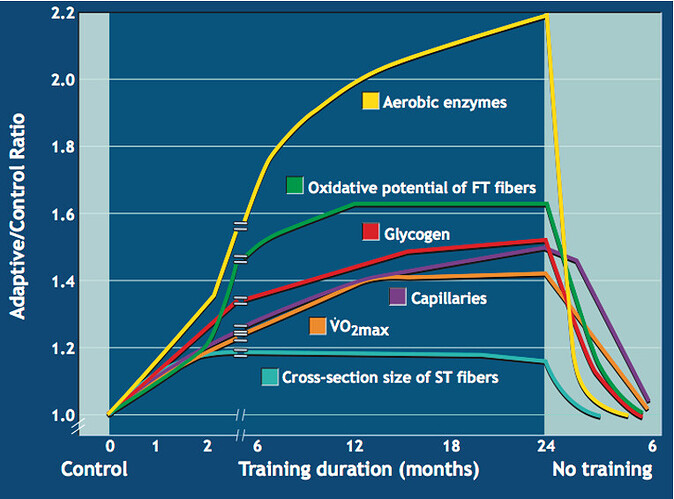I’m male, 41, 65kg, and nearing the end of year 2 of my TR experience. I’ve never had a high level of base aerobic fitness to build on, and I think that’s been the limiter that I ignored for too long.
In year 1, I did a low volume program to try to get back into shape for cyclocross season. Sweet Spot Base 1 and 2 seemed “too easy” (except Spencer +2) and I skipped a lot of endurance workouts because they were so far under the FTP line that I didn’t think they’d do anything (bad decision).
I attempted 2 Short Power Builds last year (not back-to-back, my decision making isn’t that bad), and completely fell apart both times. I couldn’t handle the simultaneous increase in both intensity and volume and got sick and lost at least a week of training during both Build blocks.
During cyclocross season, I was amazing for the first 90 seconds of the race. I could sprint past riders and move up multiple rows and be in the top 5 going into the first bottleneck. Sadly, my races continued for another 30-45 minutes after the start, and I could only muster average power in the endurance/low sweet spot range for most of that time.
For year 2, I moved up to mid-volume plans and my compliance has been a lot higher (I even do all the endurance workouts). I made it through Short Power Build back in April/May without getting sick, but my FTP went down a couple watts after the first part of build, and then recovered to where it started at the end.
I was pretty bummed. I could complete the workouts, but often felt really flat coming into the ramp tests and felt like I was stopping too soon and not seeing the improvement in my “FTP” that I thought I should be getting (where’s my 17 watt increase after the first half of build?").
Even though I wasn’t getting the vanity numbers I want to see, I felt like my fitness was getting deeper in ways that weren’t showing up in a ramp test. I thought about what area of focus would yield the most improvements to my cx lap times and decided to shift my focus to being able to pedal “hard” for longer.
Since guys like Wout and Mathieu are pretty good time trialists, and I’m very much not. I did another round of sweet spot base this summer, then followed with Sustained Power Build and now, Century Specialty.
SSB II and the first block of the build phase got somewhat messy due to wildfire smoke and the October tax extension deadline (busy season at work). I had to skip workouts and reduce intensity to survive. I also had to dial down the intensity of “long” (more than 2.5 minute intervals) VO2 workouts by about 3-5% to be able to complete them.
I didn’t get a huge FTP bump after build (yet again), but it did increase by a couple percent. I have been setting a lot of TR personal power records during Century specialty, and I’m coming into the last couple workouts of week 3 with a lot of confidence (McAdie +1 is a semi-nemisis, like riding 6 laps “hard” in a crit, 4 times. We’ll see how it goes.).
My TR Personal Records page shows that I’m putting out about 20 watts more power over 45 minutes to an hour this season compared to last season. Based on feel, and some recent successfully-completed 15 minute threshold intervals, my guess is that I could translate that into increasing my average cx-race power by at least 50 watts with some more conservative pacing. Even though my “FTP” might not be growing like crazy, my ability to put out threshold power for longer durations is coming along nicely.
All that to say that my gut instinct is that TR “works” a lot better for people who have some sort of aerobic foundation to build on, and that they’re much better prepared to cope with/recover from the really intense efforts required in the short power build and criterium/cx specialty plans.
My game plan going forward is to keep a bit more focus on bringing up my sustained power over the first half of next year (I’d like to take another swing at the first half of Sustained Power Build), and then re-evaluate where things stand.





